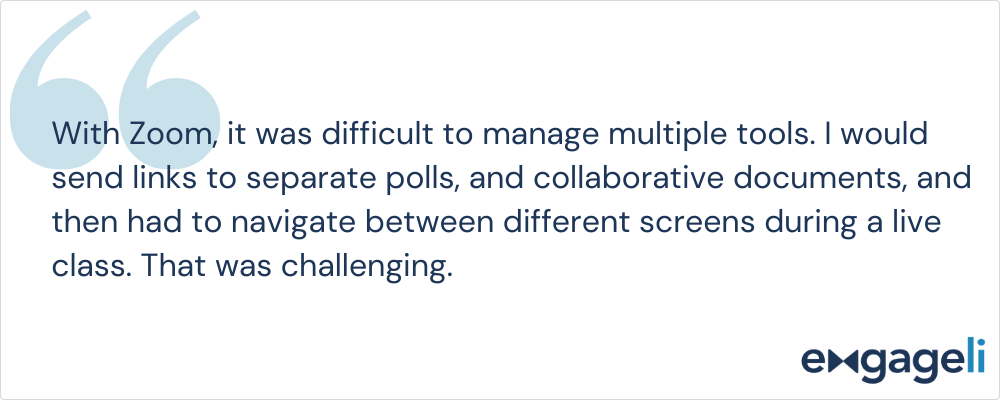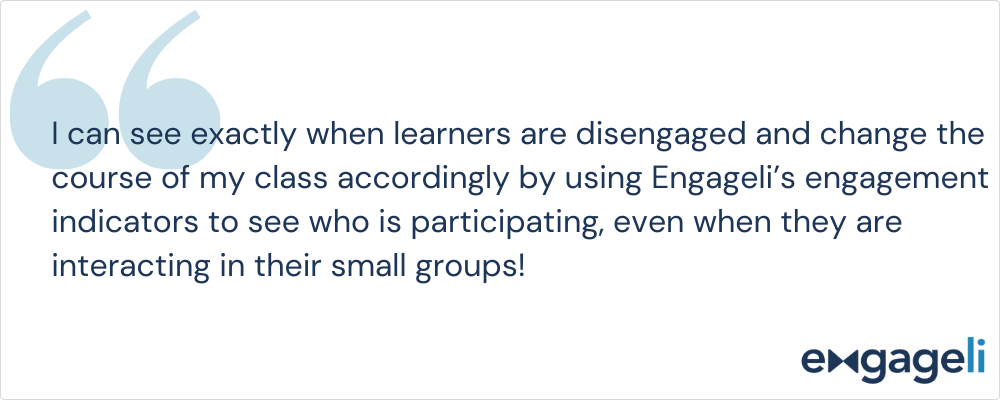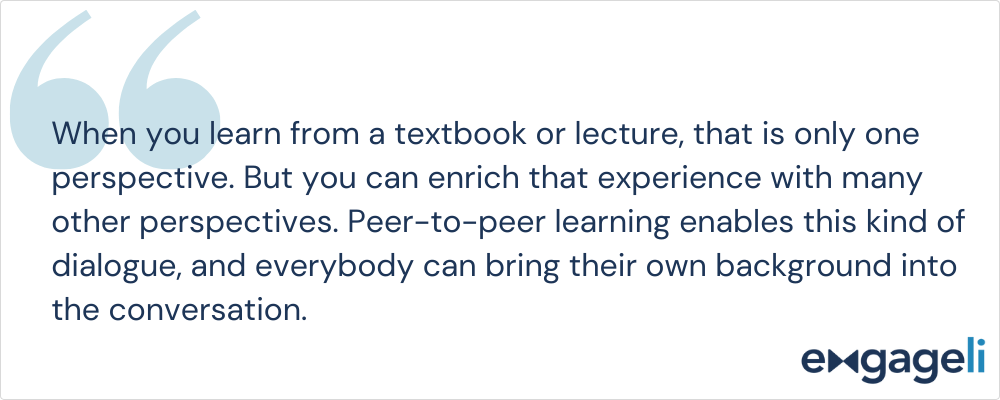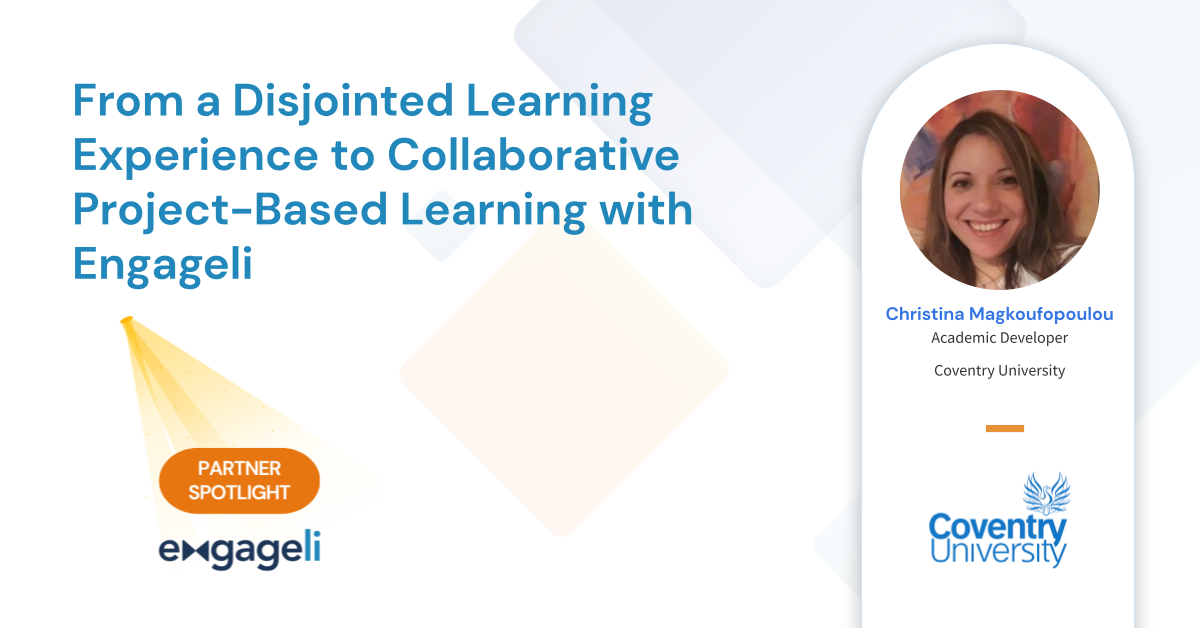Background
Dr. Christina Magkoufopoulou was hoping to find an environment that would allow her students to engage in an authentic exploration of problem-solving around projects that are rooted in their own context. In her 13-week blended module, postgraduate students qualify to start teaching in an academic environment. The course is fully online, combining synchronous and asynchronous components. The cohort included 45 learners, distributed into groups.
Module objectives:
-
- From theory to practice: explore practical applications of previously learned knowledge and turn theory learned in other modules into practice by collaborating with peers.
-
- Authentic project: design a real module for Masters in higher education in a supportive environment while receiving meaningful feedback by a panel evaluating the design for approval and implementation.
-
- Peer-to-peer learning: enable social interactions, discussions, active learning, and peer assessment. The final projects are presented to the group and assessed individually.
Too many tools in a disjointed environment made it difficult to gather insights into learners’ progress
“Prior to teaching on Engageli, I only taught on Zoom for all training and teaching. With Zoom, it was difficult to manage multiple tools. I would send links to separate polls, and collaborative documents, and then had to navigate between different screens during a live class. That was challenging.” Said Dr. Magkoufopoulou as she described the difficulties of synthesizing a variety of digital tools in an attempt to create engagement and interaction. 
Dr. Magkoufopoulou tried using breakout rooms to promote group work but found it took up valuable teaching time, and it was challenging to gain an understanding of her students' activity and progress in the groups. The feeling was they were on their own, and she was unable to monitor their progress easily“With Zoom breakout rooms” she said, “you have no idea what is happening with the groups. You cannot have an overview of how the students are behaving in different breakout rooms.” Between the overwhelming facilitation, lost teaching time, and lack of insight into learners’ progress, there was a clear need for a new online learning platform.
The transition to Engageli: meaningful insights, seamless learning flows, and authentic human interactions to support learning
Engageli’s focus on intuitive design enabled a seamless transition and supported the module objectives very well. Dr. Magkoufopoulou was able to replace a variety of other tools that were previously used. Instead of using different tools for polls and interactions, and having learners switch between screens, Dr. Magkoufopoulou had everything in one place to support the active learning experiences she desired. Like any new tool, there is a learning curve, but feedback from learners was positive. Guest contributors in the course also requested to introduce Engageli to their own faculty when they saw the potential for engaged learning online.
Dr. Magkoufopoulou found that monitoring engagement on the platform was much quicker and easier than before. She shared “I can see exactly when learners are disengaged and change the course of my class accordingly by using Engageli’s engagement indicators to see who is participating, even when they are interacting in their small groups!”

Dr. Magkoufopoulou indicated that the transition from room (full class) to table mode (group work) was instant and seamless as compared with breakout rooms in Zoom. She shared, “Engageli saved me so much time. For the last live session of the module, the students presented their projects in groups to a panel, and this session in particular was much easier for me to facilitate on Engageli.”
“Engageli provides more active learning opportunities than other online platforms that I had experienced before.” Dr. Magkoufopoulou uses polls, collaborative documents, and whiteboards to engage her learners and the tables have also enabled her to encourage more authentic group work.
The importance of active learning and peer-to-peer collaboration
Engageli was a good fit for Dr. Magkoufopoulou’s course because of her commitment to active learning and building community through collaboration. Since groups of learners are working together throughout the semester, it is important for Dr. Magkoufopoulou to facilitate community from the start.
“Active learning is rooted in research, and it helps develop skills. But it also helps the students to feel a sense of belonging, especially in aspects of online learning, where you don't have the opportunities to be in the same room with others or meet up for coffee afterward. Feeling that they belong in a group, changes their perspective on how they engage with the course. If they start feeling that they belong to a group, they have a commitment to the group and responsibility towards the group, then that will make them even more engaged with their learning.”

Dr. Magkoufopoulou believes peer-to-peer learning increases diversity and feelings of belonging in the classroom. “When you learn from a textbook or lecture, that is only one perspective. But you can enrich that experience with many other perspectives. Peer-to-peer learning enables this kind of dialogue, and everybody can bring their own background into the conversation. The social learning aspect allows people to understand a lot of different cultures and viewpoints in a contextual exploration.” This type of peer learning is enabled by Engageli and the interactions that happen naturally around virtual tables, providing students with the feeling of an in-person dynamic.
* Interview responses have been edited for clarity.
Thank you to Dr. Magkoufopoulou for your time and for participating in our Partner Spotlight series. Subscribe to the Engageli blog to catch the next instructor spotlight, and if you are interested in learning more about using Engageli, visit engageli.com/getting-started.

